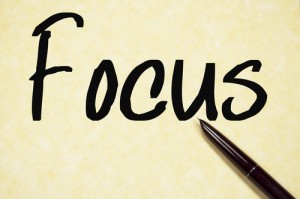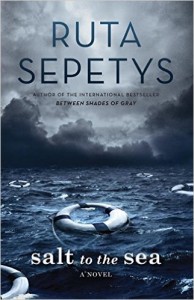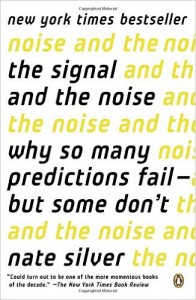 “Hattie. Take a look at this. One of your kids wrote this, and I don’t know what to do with it.”
“Hattie. Take a look at this. One of your kids wrote this, and I don’t know what to do with it.”
My friend Brian, a Physics teacher, handed me an essay. It was by one of my AP Language and Comp students from last year.
I read the first line and snickered. She was breaking down a complicated physics concept with an unexpected and slightly silly tone. It was funny. It wasn’t perfect by any means, but she had taken some liberties with her punctuation and phrasing to achieve a relaxed, informal tone; it was definitely intentional, and I was proud.
I could tell by the look on Brian’s face, though, that he didn’t share my delight.
“Who was her audience supposed to be?” I asked.
“Me?” he replied uncertainly.
I’ll spare you the rest of the conversation, but we quickly realized that we had very different ideas of what a good piece of writing could or should look like in a Physics classroom. Our district, much like many others, has spent the last few years grappling with the increased writing demands placed on content area teachers by the Common Core. Our science and social studies teachers have stepped willingly up to the plate and increased the writing in their classrooms—fantastic!—but we’ve discovered along the way that all of that new writing creates new challenges.
Are all teachers really writing teachers now? Can we hold kids to the same standards in science that we hold them to in ELA?
Yes and of course! But…that’s easier said than done.
Enter Collaboration
This is not my first rodeo with collaborative, cross-curricular writing. For the past seven years, all of the English 10 teachers and all of the Civics and Economics teachers at our school have combined forces to help our students write research papers. Though it was challenging to coordinate instruction with 12 different teachers, we made a lot of strides with improving the quality of our students’ research writing. Unfortunately, due to scheduling and class alignments, that project is no longer feasible, but I’m not quite ready to give up on this idea yet.
Luckily, Brian, the Physics teacher, was willing and eager to work with me on tackling these cross-curricular writing challenges. The more we talked, the more we zeroed in on a common goal for our students: We want them to think like writers.
We want students to write with their audience and their purpose in mind, regardless of the class. We want all kids to be able to look at any writing assignment, in any discipline, and know how to tackle it without asking, “How many paragraphs?”
That’s a pretty big goal, but we think combining our writers might help us get closer to it.
Bridging Science and ELA
My AP Language class is largely skills based. All year we’ve been working on crafting arguments, analyzing texts, and synthesizing research. These are all skills that should translate nicely to scientific writing, but it’s the translating part that kids are having trouble with, we think.
We wanted to create a bridge between the classes during our actual class time. This, we thought, might help students in that translating of skills. Though it would be ideal to just combine our classes for a few days and run a large writing workshop together, schedules and numbers of kids made that impossible.
 So our first step was a tiny one. Brian’s kids wrote some essays, and he dropped the students off to my classes, where they received some feedback about focus and organization. It was a great experience for my students to practice giving constructive feedback, and Brian was happy with the help his kids received.
So our first step was a tiny one. Brian’s kids wrote some essays, and he dropped the students off to my classes, where they received some feedback about focus and organization. It was a great experience for my students to practice giving constructive feedback, and Brian was happy with the help his kids received.
Still, we both think we can do more. Having my students edit isn’t really helping students translate their ELA skills to their Physics writing. In fact, it almost seems to reinforce the idea that writers exist in ELA classrooms alone.
So what comes next? In order to keep the assignment meaningful and relevant for both groups of students, we realized, we needed to clearly articulate our goals. For the argumentative essay he is about to begin with his classes, Brian wants his students to have more confident, natural voices in their writing. He wants them to take their scientific writing from good (but perhaps dull) to interesting and engaging. My students have been working on developing a confident, natural voice all semester—specifically through the lens of their grammar and syntax.
This can be our focus. Rather than simply have my students “fix” the essays, I can challenge them to teach their peers some of the syntactical tricks we’ve been learning this semester. To get past the shared-class-period hurdle, we plan to pair students virtually, using shared Google Docs.
I’m not sure that this gets at our ultimate goal of making students think like writers. To truly achieve that, we’d need to have the students co-writing right from the beginning, and we just can’t work out the logistics of that right now. Still, this is a step in the right direction. We’re connecting writers, and we’re helping them to model good writing and revision with their peers.
I’m no science teacher, but this is an experiment, right? Hypothesis: we’re all going to learn a lot.
 Hattie Maguire is an English teacher and Content Area Leader at Novi High School. She is spending her fifteenth year in the classroom teaching AP English Language and Composition and English 10. She is a National Board Certified Teacher who earned her BS in English and MA in Curriculum and Teaching from Michigan State University.
Hattie Maguire is an English teacher and Content Area Leader at Novi High School. She is spending her fifteenth year in the classroom teaching AP English Language and Composition and English 10. She is a National Board Certified Teacher who earned her BS in English and MA in Curriculum and Teaching from Michigan State University.

 Back in
Back in  When we conflate the two and give them a ½ on the question, we have provided ourselves a sloppy data point. And by the time we’ve graded a set of 120 of that assessment, we might come to a wrong-minded, broad conclusion that sets the class back needlessly. Do they
When we conflate the two and give them a ½ on the question, we have provided ourselves a sloppy data point. And by the time we’ve graded a set of 120 of that assessment, we might come to a wrong-minded, broad conclusion that sets the class back needlessly. Do they
 For the past several years I have been having conversations with different people in my district about having our students create digital portfolios. This effort is finally gaining some ground, though the way has been painfully slow from my perspective.
For the past several years I have been having conversations with different people in my district about having our students create digital portfolios. This effort is finally gaining some ground, though the way has been painfully slow from my perspective. This project has also inspired students to create other sites about personal interests. Seeing the application of this skill in their personal life is exactly the kind of transfer we hope for, and the kind of artifact that students can highlight down the road.
This project has also inspired students to create other sites about personal interests. Seeing the application of this skill in their personal life is exactly the kind of transfer we hope for, and the kind of artifact that students can highlight down the road. Beth Rogers is a fifth grade teacher for
Beth Rogers is a fifth grade teacher for  I’d been experimenting with standards-based grading, gradually building trust with a group of seniors I’ve had for two years by “respecting their learning process.” I’d ask them to read something, negotiate a time frame, and I’d plan based on the assumption that they’d come prepared.
I’d been experimenting with standards-based grading, gradually building trust with a group of seniors I’ve had for two years by “respecting their learning process.” I’d ask them to read something, negotiate a time frame, and I’d plan based on the assumption that they’d come prepared.  I created two paths for students to demonstrate their skills. One was the Harkness option for students who’d read. Student’s who weren’t comfortable with that, for whatever reason, were assigned a series of dialectical journal entries which I’d read and grade.
I created two paths for students to demonstrate their skills. One was the Harkness option for students who’d read. Student’s who weren’t comfortable with that, for whatever reason, were assigned a series of dialectical journal entries which I’d read and grade. Rick Kreinbring teaches English at Avondale High School in Auburn Hills, Michigan. His current assignments include teaching AP Language and Composition and AP Literature and Composition. He is a member of a
Rick Kreinbring teaches English at Avondale High School in Auburn Hills, Michigan. His current assignments include teaching AP Language and Composition and AP Literature and Composition. He is a member of a  Each year I have my students engage in a variety of online writing experiences: blogging, Google documents, websites, and presentations. At this point in the year, I find that there are two sides to online writing, and finding a way to balance them is my greatest challenge.
Each year I have my students engage in a variety of online writing experiences: blogging, Google documents, websites, and presentations. At this point in the year, I find that there are two sides to online writing, and finding a way to balance them is my greatest challenge. 5th grade classes in Maine and we are participating in the
5th grade classes in Maine and we are participating in the  I love historical fiction. Strangely, the reason I seem to love it most is that I find it humbling in two ways.
I love historical fiction. Strangely, the reason I seem to love it most is that I find it humbling in two ways. Bethany Bratney
Bethany Bratney I think it’s safe to say that there’s a bit more mathematical calculation in your normal English classroom pedagogy than there was, say, five years ago.
I think it’s safe to say that there’s a bit more mathematical calculation in your normal English classroom pedagogy than there was, say, five years ago.  The funny thing about data, though, is that numbers aren’t as clear and objective as all those charts and bar graphs would have us believe. If you don’t want to take an English teacher’s word for that, get ahold of Nate Silver’s
The funny thing about data, though, is that numbers aren’t as clear and objective as all those charts and bar graphs would have us believe. If you don’t want to take an English teacher’s word for that, get ahold of Nate Silver’s